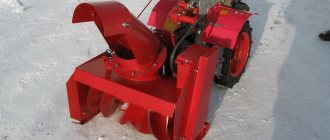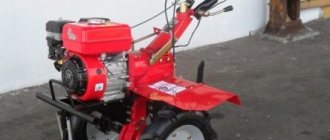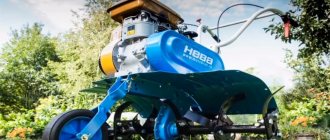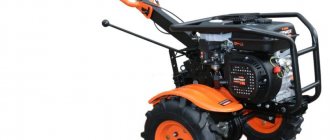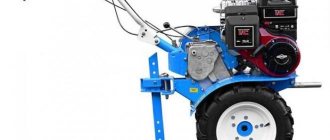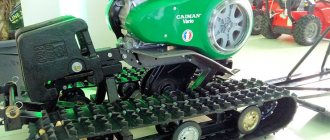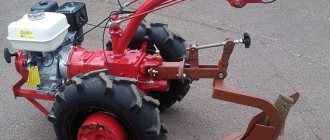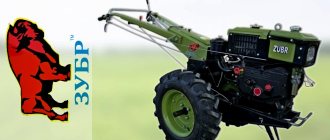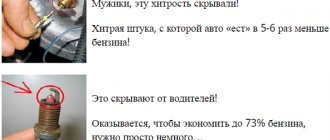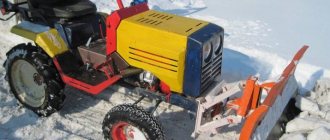Walk-behind tractors have become almost indispensable assistants for farmers. Thanks to a wide selection of attachments, you can perform almost any work: plowing the ground, making beds, planting plants, caring for them, digging up crops, fighting weeds. And also take care of the garden plot, namely sweeping it, removing snow, transporting garbage, and much more.
Motoblocks "Bison" are very popular in our country. They combine high quality, power and low cost. This type of equipment is produced in China, but it can compete even with European manufacturers. Many people have the opinion that all Chinese goods are of low quality. But in our time this is far from reality. In fact, although many factories are located in China, they purchase components from other countries. At the same time, the quality of the equipment is very high, and the price remains low.
Like any other equipment, Zubr walk-behind tractors can break down or, due to their long service life, their parts deteriorate and simply require replacement. It should be noted right away that repairing a Zubr walk-behind tractor is a fairly simple job, and you can easily purchase any spare parts. Therefore, you can entrust the repair to a specialist, or you can repair it yourself. Also carefully read the repair manual and instructions, where you can find answers to many questions.
Who is the manufacturer
Zubr is a brand that represents the Chinese approach to agricultural technology. The Zubr walk-behind tractor is chosen by gardeners who prefer functional and reliable equipment. The equipment is produced at two Chinese factories (in the cities of Zhangzhou and Yangcheng). Here they make diesel and gasoline walk-behind tractors and cultivators, as well as attachments that expand the capabilities of motor vehicles.
The official one exports its products to Europe, Asia, and the American continent. All manufactured equipment meets international standards and has certificates of conformity valid in the West.
Advantages of Zubr technology:
- “Zubr” equipment is considered universal, since the Chinese manufacturer sells attachments;
- high quality components, they are available to Russian consumers;
- temperature changes that affect operation are taken into account;
- non-proprietary equipment can be used;
- any Zubr walk-behind tractor can be converted into a mini-tractor.
On a note! The price of Zubr walk-behind tractors depends on engine power, design nuances, equipment, etc.
Zubr models
The manufacturer produces two large groups of walk-behind tractors - those running on diesel fuel and gasoline. Agricultural technology differs in cooling methods. Lighter devices use air-cooled motors. Powerful and heavy units are equipped with water-cooled motors.
Diesel
The Chinese manufacturer offers several models running on diesel fuel. They differ in motor power, type of cooling, starting and cooling methods, and number of speeds.
PS-Q74
This walk-behind tractor has a four-stroke air-cooled engine. Motor power – 4 l. With. Dimensions: LxWxH, cm – 143x52x82, used for processing small plots of land and greenhouses.
Motoblock Zubr NT 135
Specifications
- Engine KM186F;
- Number of speeds – 2 forward/1 reverse;
- A 9 HP engine is installed. With.;
- The fuel tank holds 6.6 liters;
- The presence of an electric starter makes starting the engine much easier;
- Impressive weight – 135 kg;
- The engine capacity does not exceed 406 cm3.
The unit is considered as the most powerful device in the line, which is air-cooled. The engine features a cast iron liner and excellent performance even at low speeds. Bison NT 135 has a reliable design and can cultivate about 2 hectares of land.
As for the features of using the device, each option is accompanied by operating instructions, so problems with controls and other issues should not arise. It is worth noting that even if the instructions are lost or become unreadable over time, they can be found with us without any problems. Today, many, having assessed the advantages and disadvantages of current devices, consciously choose the zubr walk-behind tractor and do not regret their decision.
Attachments
Thanks to a variety of attachments, Zubr equipment can be used for a wide variety of tasks. Devices that can be purchased in addition to the walk-behind tractor can significantly expand its capabilities.
Rotators
Soil tillers can perform several agricultural tasks at once, allowing you to simplify the process of cultivating the land.
Rotary cutter functions:
- plowing and soil cultivation;
- destruction of weeds;
- improves soil aeration;
- qualitatively mixes soil layers;
- levels the surface of the area;
- processes complex, floating soils;
- applies fertilizers for plowing.
offers two rototiller options - saber and crow's feet.
On a note!
The use of soil cutters allows you to effectively destroy not only annual but also perennial weeds.
Mowers
By attaching the mower to a mini-tractor, it can be used for cutting hay, collecting straw, and mowing lawns. Zubr offers three options for mowers:
- rotary;
- segmental;
- frontal.
Snow removal devices
In winter, thanks to special attachments, the walk-behind tractor turns into a snow removal equipment. Thus, the equipment does not stand idle in winter, but performs new, unexpected work.
The manufacturer offers three options for snow removal equipment:
- Blade shovel. With its help it is convenient to remove thick snow.
- Brush. Helps effectively clear the yard of light snow cover.
- Auger snow blower. This device collects, crushes and throws snow, all in one working cycle. Typically, auger snow blowers are used to remove freshly fallen snow.
Plow
With the help of a mounted plow, Zubr walk-behind tractors plow the ground deeply and efficiently. It is used instead of rototillers to plow the soil to a significant depth - up to 30 cm. Plows can be double or single. The working width of units with double plows reaches 80 cm.
Lug wheels
Lugs are metal equipment that replaces pneumatic wheels. During movement, the lugs simultaneously loosen the soil. This equipment is usually installed on heavy-duty walk-behind tractors. The lugs make the mini-tractor heavier, facilitating better soil processing.
Potato planters
With the help of potato planters, farmers, summer residents, owners of vegetable gardens and personal plots can automate the process of planting potatoes. Attachments can significantly facilitate the process and reduce the time of planting root crops.
Potato planter functions:
- makes furrows;
- a special mechanism lowers the tubers into the furrows, maintaining equal intervals between them;
- covers the potatoes with soil and hills them up at the same time.
Potato digger
This equipment fully automates the process of digging up tubers. With its help, the tubers are removed from the soil, shaken off, and thrown onto the ground. There are two types of trailed equipment - vibrating and screening.
On a note!
Potato diggers can be used not only for collecting potatoes; they can be used to dig up beets, carrots, turnips and other root vegetables.
Hitch
A hitch is an element with which attachments and trailed equipment are connected to a walk-behind tractor. Most models are sold without hitches, so they must be purchased separately. offers a universal hitch with which you can expand the functionality of walk-behind tractors.
Adapter
An adapter is a kind of cart that consists of several elements: wheels, frame, seats. The adapter is attached to the walk-behind tractor using a hitch. It also has footrests and a brake lever. Thanks to the adapter, the unit turns into a mini-tractor with a seat.
The unit, equipped with an adapter, turns into a comfortable piece of equipment that makes hard agricultural work easier. Together with the adapter, other attachments can be attached to the walk-behind tractor - a mower, a plow, a milling cutter, etc.
Trailer
The trailed trolley is attached to the walk-behind tractor using a hitch. It is used to transport bulk or piece goods. It is convenient to use for transporting fertilizers, harvested crops, etc. The trailer is used in conjunction with an adapter - a person can operate a mini-tractor while sitting on a comfortable seat.
Hillers
Working body for processing loosened soil. With the help of hillers, you can not only hill up the soil, but also carry out other agricultural activities - weeding, cutting furrows for seedlings or planting tubers. It is convenient to hill up plants planted in rows - the working element, passing along the rows, moves the soil into the rows.
The main purpose of hillers is to hill up potatoes in order to increase the yield. There are hillers with fixed and variable soil coverage widths. There are models with wings and disk ones. The disadvantage of hillers is that part of the earth rolls back into the rut being made.
Weights
Weights help walk-behind tractors that are prone to slipping better cope with their functions. Weights, increasing the weight of the equipment, allow the cutters to sink deeper into the ground. They also stabilize work on sloping sites and hard soils, which simultaneously increases work efficiency and simplifies work.
Pneumatic tires
Wheels 4.00-8 are included. They can be attached to a trailer, mower, or snow blower. The wheel consists of a rubber tire, a tube and a collapsible disk. The wheels are suitable for working on the ground and for moving loads.
Crawler attachment
With a tracked attachment, the walk-behind tractor can move through swampy and heavy soils. Units equipped with tracks can be used in the off-season. The caterpillars move easily through the snow. A crawler walk-behind tractor becomes a vehicle - you can use it to get to a hunting or fishing spot.
Oil in the walk-behind tractor gearbox?
The instructions for the Neva say to pour TEP-15 oil. In the nearest stores there is no such thing and have not heard of it. I saw a recommendation on the forum to pour any GL-5. But it also varies. For example, if you take Lukoil, then: SAE 75W-90 SAE 85W-90 SAE 80W-90
I compared the parameters according to GOSTs - it seems that the closest thing to TEP-15 is GL-5 SAE 75W-90. Since I’m not good at transmission oils, please tell me which one is better to use.
- View profile
- Private message
In general, there are also doubts about the GL-5.
Here there is a table “Compliance of gear oil brands according to this standard with previously adopted regulatory and technical documentation, foreign classifications and GOST 17479.2 “
According to it, TEP-15 is GI-2 (by the way, why GI and not GL is unclear)
I found another document:
API classification of gear oils by application:
GL-1 Spur, worm and helical bevel gears in low speed and load applications. Mineral oils without additives or with antioxidant, antiwear and antifoam additives without extreme pressure components.
GL-2 Worm gears operating under GL-1 conditions, but with higher requirements for anti-friction properties. May contain an anti-friction component.
GL-3 Conventional helical bevel gear transmissions operating under moderately severe speed and load conditions. They have better anti-wear and extreme pressure properties than GL-2.
GL-4 Automotive hypoid transmissions operating in conditions of high speeds with low torques and low speeds with high torques. The presence of highly effective extreme pressure additives is mandatory.
GL-5 Automotive hypoid gears operating under conditions of high speeds and low torques, under the action of shock loads on gear teeth - at high sliding speeds. Must contain a large amount of sulfur-phosphorus-containing extreme pressure additive.
GL-6 Automotive hypoid gears with increased vertical displacement of gear axes, i.e. operating at high speeds, shock loads and high torques. Contains more sulfur-phosphorus extreme pressure additives than GL-5 oils.
As I understand it, GL-2 and GL-5 oils are very different. So what should you pour? Explain to the lamer
- View profile
- Private message
You can pour any oil corresponding to GL-5 into the walk-behind tractor gearbox, and the viscosity is at your discretion, 75W90 I think up to -30C.
- View profile
- Private message
The gearbox parts of the walk-behind tractor do not experience heavy loads, so any transmission oil can be poured. If the seals are good, pour Lukoil TM-4 80W85, if they are bad, pour thicker oil (the ones you already mentioned) or replace the seals. In the gearboxes of walk-behind tractors of the “Luch” and “Cascade” types, lubrication occurs by splashing, so the thinner the oil, the better. If you use the walk-behind tractor frequently in winter, don’t buy the “liter” of semi-synthetic 75W90.
- View profile
- Private message
Trilliput wrote: If you frequently use a walk-behind tractor in winter, don’t buy the semi-synthetic 75W90 litrushka.
What's the difference with min. 75W90?
- View profile
- Private message
Message from vadim 08355 What is the difference with min. 75W90?
Good question. Mineral oil cannot provide such a temperature range - either winter oil SAE 75W or summer oil SAE 90. I emphasized the inappropriateness of using expensive synthetics.
- View profile
- Private message
But this is a bad question for you.
Dizzy78 wrote: I compared the parameters according to GOST standards - it seems that the closest thing to TEP-15 is GL-5 SAE 75W-90.
Oh my. This is a walk-behind tractor! Post No. 4 can be safely included in any instructions. Word by word.
- View profile
- Private message
Trilliput, thanks for the detailed answer!
vadim 08355, try to imagine that not all users of garden equipment are mechanics or, at worst, engineers. I formulate the questions due to my understanding of this topic; the properties and composition of oils are deeply uninteresting to me. If the equipment manufacturer, in the instructions for “amateur” garden equipment, recommends using consumables that, frankly, are not very accessible in retail stores, and also operates with GOSTs unknown to the “general public” (absolutely ignoring international classifications), then this is a question for the manufacturer, not to the user. For some reason, in the passport for the Subaru engine from this walk-behind tractor, recommendations for oils are given more specific and no questions arose.
- View profile
- Private message
Dizzy78 wrote: If the equipment manufacturer, in the instructions for “amateur” garden equipment, recommends using consumables that are, frankly speaking, not very accessible in retail stores, and also operates with GOSTs unknown to the “general public” (absolutely ignoring international classifications), then this is a question for the manufacturer , not the user.
Dizzy78. Sorry. You're right.
Dizzy78 wrote: I am deeply uninterested in the properties and composition of oils.
And I'm very interested. Although I am not a motor mechanic or an engineer. I once worked as a car mechanic. But not for long. Regarding the oils, I would skid. Interesting topic. The bad question meant synthetic 75W90. Why semi/synthetic? That's all. It’s like viscosity is viscosity, and composition is composition. In general, I shot at the wrong gate. Once again, sorry.
- View profile
- Private message
vadim 08355 wrote: And I’m very interested. Although I am not a motor mechanic or an engineer. I once worked as a car mechanic. But not for long. Regarding the oils, I would skid. Interesting topic. The bad question meant synthetic 75W90. Why semi/synthetic? That's all. It’s like viscosity is viscosity, and composition is composition. In general, I shot at the wrong gate. Once again, sorry
Also sorry for the harshness. And as for why I suggested semi-synthetic 75W90, I’ll explain, from the point of view. amateur Because The manufacturer didn’t give me anything other than GOST, and I have practically no knowledge of oils, I stupidly took 2 tables: - physical and chemical parameters of transmission oils, respectively. with GOST standards (Table 1) - Transmission oils: “LUKOIL-TM” and compared according to available indicators. It turned out that the 75W90 has the closest characteristics to TEP-15. I confess, I didn’t pay any attention to the composition at all, I thought that GL-5 was all semi-synthetic (now I know what the differences are, I won’t ask such a bad question a second time). Trilliput explained why to dance when choosing.
- View profile
- Private message
Many people are very surprised, but theoretical research is one thing, but practice is completely different. So, at the service center of the manufacturer Krasny Oktyabr, the technicians recommend and fill the MB 2 transmission with regular M-6 engine oil. 2l. I have no reason not to trust the practitioners through whose hands all MB repairs take place. (They do not recommend fuel additives from a company store, because when gasoline dries, a yellowish coating forms in the carb, which completely clogs the jets. They showed it, I saw it myself.) Justification - if the designers had provided for the complete filling of the gearbox (5 liters), then The transmission one would be suitable, but if you fill in so much, the seals will leak. And motor oil has the ability to adhere to the metal surface much better than transmission oil. Personally, I tried it and everything is fine.
- View profile
- Private message
pmigse wrote: So, at the service center of the manufacturer Krasny Oktyabr, the technicians both recommend and fill the MB 2 transmission with regular M-6 engine oil. 2l. I have no reason not to trust the practitioners through whose hands all MB repairs take place.
I am in no way suggesting that you should not trust, but you shouldn’t carry it out categorically either. The Renault service company recommends only Elf oils for their cars. This does not mean that oils such as Mobil, Castrol, BP, etc. are worse and cannot be poured into Renault. I do not rule out that when filling M-6, AC8, etc., the minimum requirement is met - lubrication. Considering that the loads are not MEGA, the gearbox will honestly serve the warranty period (and even more) and then. You will come to the service center to replace gears (sprockets), couplings, and bearings. It might even be a very plausible story. Once upon a time, the VAZ-2108 gearbox was also filled with motor oil, then they refused and switched to the transmission. Therefore, IMHO, you should not tempt fate. Don't put an '=' sign between the manufacturer and the service, sometimes they are very far from each other.
- View profile
- Private message
The fact is that I wouldn’t put the MB even close to the car in terms of loads or mileage. These are completely different mechanisms. And their requirements for lubrication of components are also different, despite the similar functionality (automatic gearbox and MB gearbox, for example). For what reasons does the manual prescribe transmission oil for the gearbox? After all, I repeat, not all of its volume is filled, lubrication is carried out in the upper part by splashing, and engine oil is much better retained on the rubbing surfaces, especially at low speeds in the gearbox and low splashing intensity - this is important.
- View profile
- Private message
pmigse wrote: For what reasons does the manual prescribe gear oil for the gearbox?
I hope you posed this question to the manufacturer and not to me, although I can guess.
pmigse wrote: After all, I repeat, not all of its volume is filled,
Naturally. This is never done. It has a negative effect - CONTINUOUS squeezing out.
pmigse wrote: lubrication is carried out in the upper part by splashing, and engine oil is much better retained on the rubbing surfaces, especially at low speeds in the gearbox and low intensity of splashing - this is important.
Not really. Engine oil is designed for higher speeds, so it is thinner (see below). The splashing “gets” mainly to the bearings, and the gears are lubricated by transfer on the teeth (chains). This is where engine oil is less effective. Motor oil has its own tasks: to withstand high temperatures, while resisting oxidation and burnout, to provide fast (up to 7000 rpm on the crankshaft) lubrication of the liner with a THIN layer so as not to resist contraction by the oil scraper ring, high cleaning properties, the ability to be pressed through by a pump at any rpm (temperatures). For the transmission: resist the formation of dents and scuffs on the metal surface, foam formation, and withstand large “pressure” loads. There are different additives for different tasks. If everything were simple, then there would be only one unified oil.
pmigse wrote: The fact is that I wouldn’t put the MB even close to the car in terms of loads or mileage. These are completely different mechanisms. And their requirements for lubrication of components are also different, despite the similar functionality (automatic gearbox and MB gearbox, for example).
Well, they are not that different, although I partially agree. But it is even more wrong to “equal” the GEARBOX and the ENGINE. Even oils for different types of gears are separated (see post 2), and here. Everyone is free to do whatever they want with their MB, but I would like them to have information before doing this. That's why my posts are so long. Please excuse me for this.
Comparison with analogues
On the market, Zubr walk-behind tractors have a competitor that offers equipment at a similar cost - Centaur. This technique is also made in China.
Comparison of the Centaur and Bison equipment:
- Among the "Zubrov" there is equipment with a capacity of 4-12 hp. With. The Centaurs have a maximum power of 13 hp. With.
- Both manufacturers have models with petrol and diesel engines. In high-performance units, models of both brands have an additional electric starter.
- Thanks to the PTO (power take-off shaft), any special equipment can be attached to the Zubr and Centaur walk-behind tractors. Both manufacturers produce a wide range of attachments - mowers, cultivators, etc.
- The cost of “Bison” is in the range of 20-70 thousand rubles, the price of “Centaurs” is 16-65 thousand rubles.
Motoblocks "Zubr" are neither superior nor inferior to "Centaur" either in characteristics or functionality. Chinese technology shows good performance, is reliable and versatile. And compared to Western technology, Chinese units are significantly more expensive.
For what reasons does a diesel walk-behind tractor take a lot of oil?
Sometimes situations arise when the operation of a walk-behind tractor does not go as smoothly as desired. Among the reasons for this problem are:
- PCV system malfunction causing oil to be sucked back into the engine. To get rid of the problem, you should replace the PCV valve;
- Mechanical problems can also cause excessive oil absorption. It is necessary to check the compression, because due to its poor performance, the oil may not enter the combustion chamber, but simply “disappear” along with the fuel;
- Previously occurring problems with a damaged catalytic converter can also be a culprit. It is possible that dust and particles of spilled catalyst entered the combustion chamber and led to mechanical damage to the cylinders. The solution is to replace the cylinders;
- Worn valve seals allow oil to easily leak through the engine, so you should check them carefully if they need to be replaced.
The engine of a walk-behind tractor is the “heart” of the device, therefore the choice of oil and its care should be taken with the utmost seriousness, then the unit will “thank” the caring owner with a long service life and a minimum number of problems that arise.
When servicing agricultural equipment, it is important to correctly select related and consumable materials. Particularly acute, in this sense, is the question: what kind of oil to pour into the walk-behind tractor . The performance of the equipment, its service life and a number of other factors that relate to a specific brand of walk-behind tractor depend on this choice. Some manufacturers clearly indicate in the technical documentation that comes with the device the recommended brand and type of oil. However, such information is not always saved and as a result, the user of the equipment is forced to follow basic recommendations, ignoring the manufacturer’s warnings.
User manual
Each Zubr walk-behind tractor comes with instructions and descriptions. All blocks and assemblies are illustrated with technical drawings. The instructions also contain the characteristics of the Zubr walk-behind tractors, instructions for their start-up and running-in.
How to start
Before starting the walk-behind tractor, you must carefully study the instructions, especially the “Running in” chapter. First launch." If mistakes are made during the first start-up, the equipment may break down in the first hours of operation.
You cannot use the walk-behind tractor without running in the engine. After starting it for the first time, you need to break in the engine. This will allow small parts to rub in, and as a result, the equipment will avoid breakdowns. The motor starts to operate at low loads. Run-in should last from 5 to 20 hours. Attachments are not used during break-in.
The procedure for running the walk-behind tractor:
- The walk-behind tractor is completely filled with fuel.
- Oil is poured into the oil tank.
- If the engine is water cooled, add water.
- Lubricate all rubbing parts with oil.
- Check the reliability of the fastenings.
- Check the tension belts.
- Turn on the unit at idle speed.
- Allow the unit to operate at each speed. The duration of operation at speed is indicated in the instructions.
- Check the brake system, steering, etc.
- After running in, they move on to maintenance.
After the first start and break-in, you need to change the oil, and the walk-behind tractor can operate at full power.
Maintenance
For equipment to work properly, it needs maintenance. All steps are described in detail in the instructions.
Maintenance procedure:
- measuring oil and fuel levels;
- Change of oil;
- cleaning equipment elements from contamination;
- lubrication of rubbing parts - the names of oils are indicated in the instructions for the equipment;
- checking and tightening fasteners;
- once a month – technical inspection;
- diagnostics at the service center.
Attention!
To refuel gasoline models, use only high-quality unleaded gasoline - AI-92, and SE, SF, SG motor oils. For diesel models - SA, SV, SS, CD oil and high-quality diesel fuel.
When field work is completed, the equipment is preserved - dirt is removed, dried, gasoline/diesel fuel and oil are drained, rubbing elements are lubricated and, covered with a tarpaulin, placed in a garage or other dry room.
How to fix breakdowns
Motoblocks that are properly operated and undergo timely inspection are protected from unexpected breakdowns. If they are small, you can eliminate them yourself.
A common failure is the inability to start the engine. How to fix:
- Spark plug problems. If it is burnt, wet, or smoked, the engine will not start. A burnt and wet candle is replaced, and a sooty candle is cleaned. The problem often arises due to an unset gap - it needs to be set.
- Clogged filter. Needs to be replaced.
- No fuel supply. It is necessary to check the fuel line - it may be clogged. If this happens, you need to replace the hose and clean the carburetor - in models running on gasoline.
- The magneto burned out (converts mechanical energy into electrical energy). Needs to be replaced and adjusted.
Reasons for engine heating:
- low oil level;
- contamination of the engine or ventilation;
- foreign object entering the muffler;
- loss of spark in the spark plug.
Vibration of equipment indicates incorrect installation of cutters, damage or loosening of fasteners.
Specifications
We invite you to study the table with the technical characteristics of the HT-105 walk-behind tractor:
| Engine, general characteristics | |
| Type: | Single-cylinder vertical four-stroke diesel engine with active air cooling and direct fuel injection KM178F |
| Cylinder diameter | 78 mm. |
| Piston stroke | 64 mm. |
| Engine capacity | 305 cc |
| Speed | 3600 rpm |
| Maximum output power | 4.4 kW / 6.0 l. With. |
| Average piston speed, m/s | 7,4 |
| Average effective pressure, kPa (kgf/cm2) | 540,5 (5,52) |
| Fuel consumption, g/kW h (g/hp h) | ≤288,3 (212) |
| Engine oil consumption, g/kW | ≤4,08 (3) |
| Fuel tank volume | 3.5 l. |
| Lubricating oil volume, effective | 0.41 l. |
| Lubricating oil volume, total | 1.1 l. |
| Direction of rotation of the crankshaft (view from the flywheel end) | Clockwise |
| Lubrication system type | Oil pump (pressure and splash) |
| Startup type | Manual (energy starter) |
| Dry weight | 34 kg. |
| Maximum engine tilt during operation | 20° |
| Engine, valve opening and closing cycles | |
| Intake valve opening | BTDC 18°30' |
| Closing the intake valve | ABDC 45°30′ |
| Exhaust valve opening | BBDC 55°30' |
| Closing the exhaust valve | ATDC 8°30′ |
| Engine, initial fuel angle and valve clearances | |
| Initial fuel feed angle | 20±1° |
| Intake valve clearance (cold engine) | 0.10~0.15mm |
| Exhaust valve clearance (cold engine) | 0.10~0.15mm |
| General characteristics of the Zubr HT-105 walk-behind tractor | |
| Overall dimensions, mm | 1740×980×1050 |
| Cultivation width, maximum | 1050 mm. |
| Cultivation width, minimum | 750 mm. |
| Cultivation depth, maximum | 300 mm. |
| Cultivation depth, optimal | 220 mm. |
| Transmission | Gear, 2 + 1 |
| Structural weight of walk-behind tractor: | 120 kg. |
| Wheels | 4.00 - 10, chevron tread pattern |
| Transmission | Gear reducer with bevel gear |
| Amount of oil in the gearbox: | 1.7 l. |
| Gearbox oil type: | Semi-synthetic transmission oil for gearboxes |
| Rated trailer loading weight: | up to 350 kg. |
Reviews
Denis, 37 years old
At first I doubted the quality of the equipment, as I was confused by the Chinese assembly. As it turned out, it was completely in vain. I bought a JR-Q78, for some reason it was written - made in Belarus, although it is known that this is Chinese equipment. During the first year, the walk-behind tractor worked without breakdowns. A year later I changed the bearing, no more problems. I have been using the equipment for five years, it starts without problems.
Dmitry, 44 years old
I bought an 8 liter ZUBR walk-behind tractor. With. After running it in, I immediately attached the potato digger and tried it out on the field. The device is somewhat heavy to operate, so I am considering purchasing an adapter. There is enough power for work and transportation.
Land owners can choose a suitable Zubr walk-behind tractor. There are equipment on sale with different performance levels. To expand the capabilities of the walk-behind tractor, you can buy attachments.
